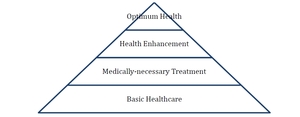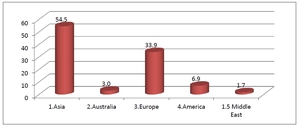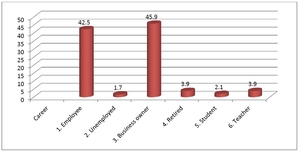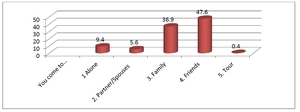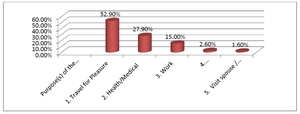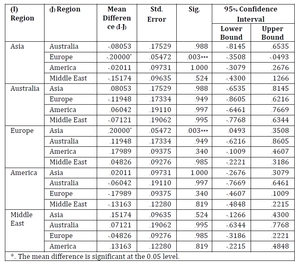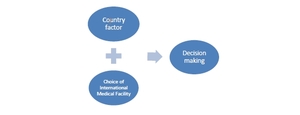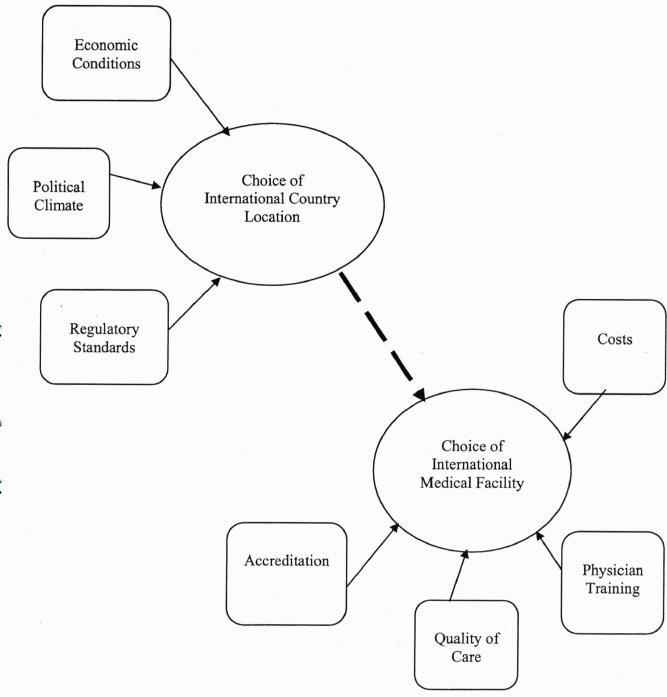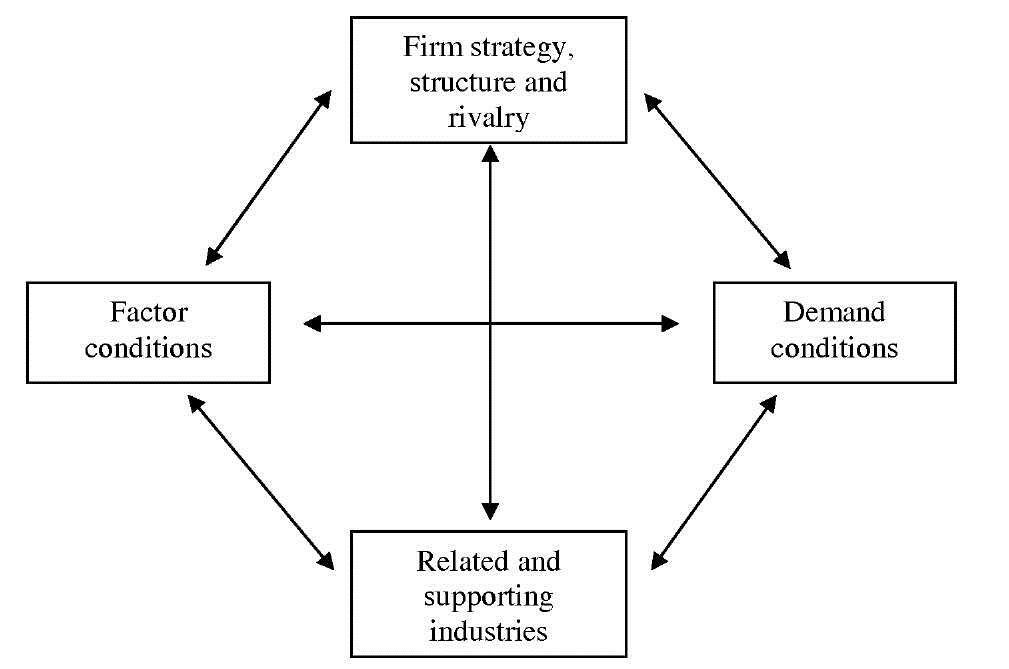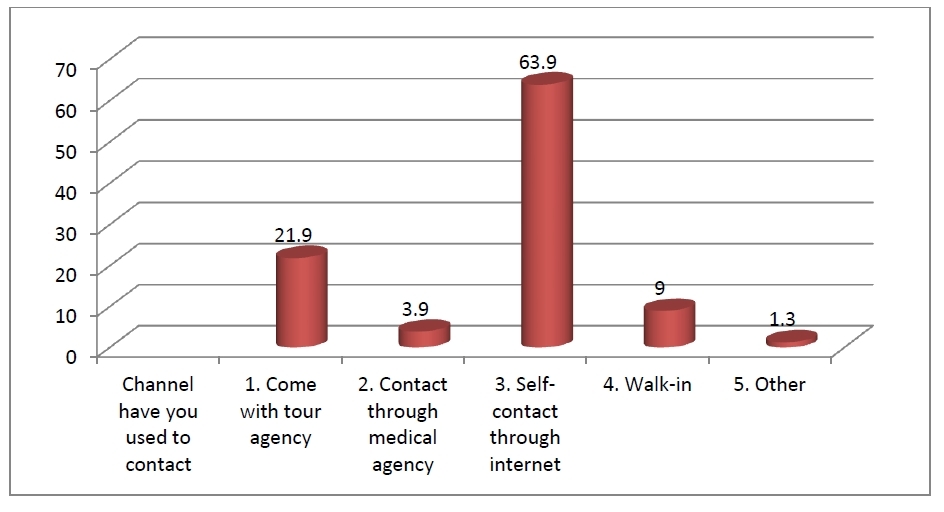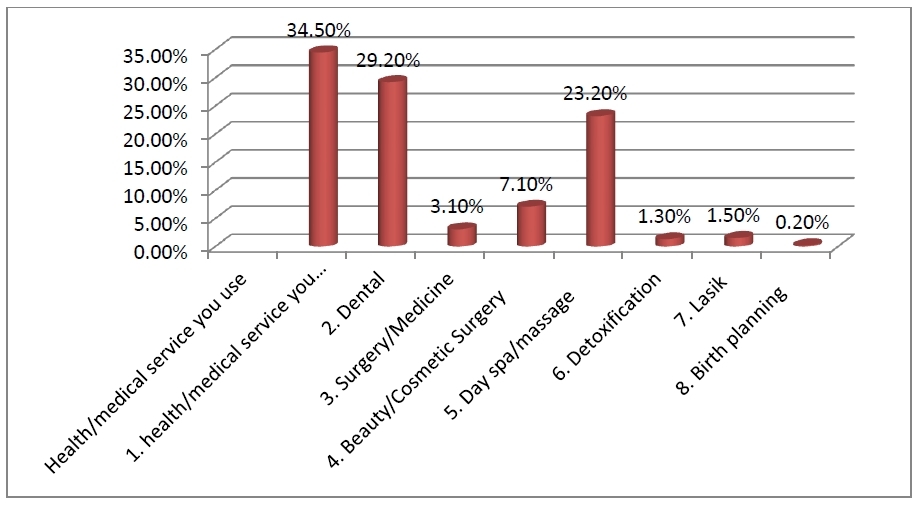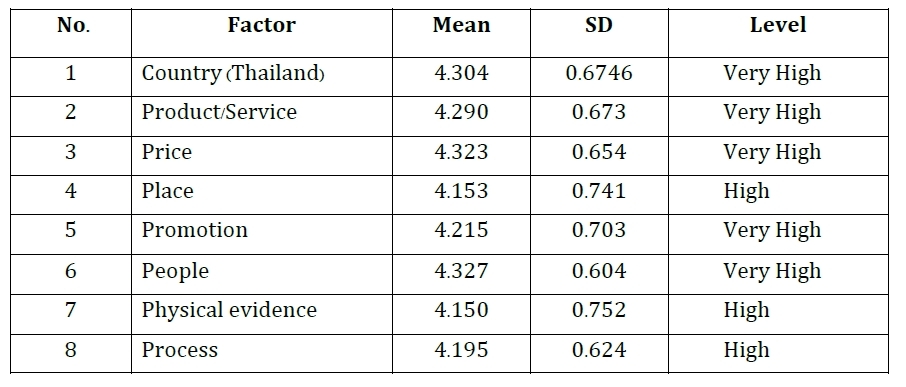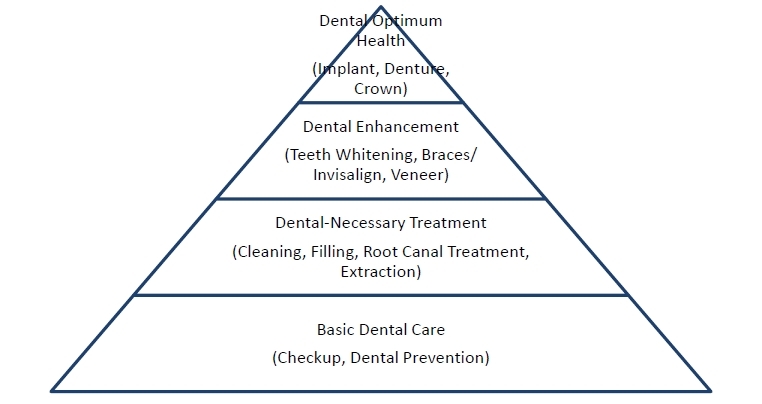The tourism industry is a high growth industry and plays an essential role in Thailand’s socio-economic system. It is a significant source of income for foreign exchange, job creation, and generated revenue for the country, and is helping the economy recover faster than the manufacturing sectors and services.Tourism is a vital accelerator in the development of trade, investment, and transport infrastructure when the country suffers an economic crisis.
The Thai government has been working to promote “Thailand 4.0” as a new economic model aimed at pulling Thailand out of the middle-income trap and developing innovation-driven economy by promoting technology, creativity, and innovation focused industries and finally to become a high-income country and one of the favored investment destinations in Asia. Among five new industries that are being developed with the goal of accelerating Thailand’s growth, medicine, and healthcare are included.
Government promotion of Thailand’s healthcare, wellness, and medical industry has proceeded in three waves (Intralib & Lyder, 2017). These are the “Medical Hub of Asia” in 2004, the “Centre of Excellent Health in Asia” in 2012, and “Thailand: A Hub of Wellness and Medical Services” in 2016.The 2004 plan focused on three main areas:(1)medical services, (2) health services (including spa services and traditional massage), and (3) herbal products. These areas were refined intofour focus areas in the 2012 strategic plan:(1) medical services, (2) wellness centers, (3) Thai herbs, and (4) traditional and alternative Thai medicines. At present, the ten-year vision (2016 to 2025) focuses on four priority areas: (1) wellness, (2) medical services, (3) academics, and (4) products.
Thailand’s health tourism has increased its attractiveness among foreigners due to the low cost of medical treatment, the quality of treatment provided by private medical centers, and the highly developed tourism industry (Medical Tourism to Thailand, n.d.). Likewise, there are many natural attractions, such as the sea, forests, mountains, culture, traditions, food, entertainment, and shopping to compliment medical services provided to health tourists (Tourism Authority of Thailand, 2012). It generates a lot of income for the country each year.Medical tourists traveling to Thailand spend more money and stay longer than holidaymakers. On average, a cosmetic surgery tourist spends $4,200US over two weeks, compared to the $1,300US spent over six days by a culture and leisure tourist (New data on Thailand medical tourism, 2017).
Thailand’s growth in the economy and medical expertise mean potentially interesting opportunities for foreign investment in the healthcare, medical, and wellness industry. Thailand’s medical tourism industry is mostly driven by private hospitals; over 470 are private facilities, which is the most substantial number of private hospitals in Asia. The procedures medical tourists come to Thailand for varies. The treatments include the following:cosmetic/plastic surgeries, dental procedures, medical check-up programs, cardiac procedures, orthopedic surgery, infertility treatment, Bariatric surgery, and ophthalmology and eye surgeries (Economic Research Center of Siam Commercial Bank, 2017).
Kasikorn Research Center Thailand (2012) revealed that dental services are an outstanding service in the health tourism industry. The number of foreigners using dental services ranked the third most popular service, accounting for 11% (13,382 million baht or $426 million US).). Health services, medical services, and dental services, including related services for the tourism industry, generated a total revenue of not less than 140,000 billion baht or $4.45 trillion US, which is an increase of 18% from the previous year.
Unfortunately, when looking at the aspects of marketing promotion in tourism, there is no marketing communication to establish a brand for dental health tourism. Although Thailand has a huge advantage in providing dental services ranging from the quality of the dentist to the quality of service that meets the world standard. As Thailand is ranked as the 3rd most favorite country in the world for medical tourism with cost savings of 50-75% compared to the US (Sutherland, 2017), it is a significant selling point for dental services in Thailand that it can compete with other countries.
A study of the factors influencing decision-making in dental tourism in Thailand by international health tourists in Bangkok is part of a critical demand-side survey in developing communication strategies. Marketing is aimed at maintaining foreign tourists who come to Thailand for health tourism, as well as to attract new tourists. Additional flights have been scheduled to enable foreign tourists to use Thai dental services on a more continuous basis. Previous studies focused on determining medical tourists’ satisfaction. The researchers were interested in learning the factors influencing the decision to have dental services performed in Thailand. The information can be used to help improve the quality of tourism services to meet the needs and increase the satisfaction of foreign tourists. The findings could facilitate the effectiveness of marketing communication strategy formulation among dental tourism providers.
Research Questions
-
What is the profile of medical tourists using dental services in Thailand?
-
What are the factors influencing foreign tourists’ decision to use dental services in Thailand?
Research Objectives
-
To determine the profile of foreign tourists seeking dental, medical services in Thailand
-
To study the factors influencing foreign tourists’ decision to use dental services in Thailand
Review of Related Literature
Three concepts relevant to the objectives were reviewed.They included theories/concepts in the hierarchy of healthcare need, decision-making for medical tourism, and competitive advantages of the nation.
Hierarchy of Healthcare Need
Runnels & Carrera (2012) studied medical tourism and health services. Using the theory of Maslow’s hierarchy of needs as a foundation, they grouped medical needs into four categories: 1) Basic healthcare 2).Medically-necessary treatment 3). Cosmetic surgery and 4). Holistic healthcare.
Regarding the healthcare needs, this factor results in people seeking service providers who are appropriate and consistent with their requirements.The service provider may consider this “service” factor.
Travelers may travel to other countries to get the health services they need. The service will vary depending on the level of demand.
Researchers have identified the need for health services as a mediating variable. They studied the factors that motivate medical tourism, because this theory can categorize healthcare needs of the group, which includes the need for a health checkup, primary treatment, surgery, the relaxation that provides for mental health, emotional well-being, and spiritual peace of mind.
Decision-Making for Medical Tourism
In 2007, Smith and Forgione presented factors influencing the choice of American medical tourism using a decision model called the two-stage model.
The model showed steps and factors for choosing the above mentioned medical tourism services.American tourists will decide which country first and then select the service. There are three factors to consider in choosing a country in this model: economic conditions of the country, the political and social context of the country, and the standard of the medical law of that country.
After selecting a country to travel to, there are four main factors that American medical tourists use to decide on the service: first, the cost of medical treatment and other expenses; second, medical standards accreditation; third, the quality of care, such as cleanliness, accommodation, and food security; and, last but not least, the quality of doctors and nurses especially trained by international medical institutions.
Competitive Advantages of the Nation
Porter (1990) developed a list of systematic conditions that determine the competitiveness of the country. In his system, there are four significant conditions, as presented in the model:
1. Factor Condition: Nation’s resources like infrastructure technology, especially the production factor, such as skilled labors
2. Demand Condition: Domestic customers are critical, especially for customers with complex needs that will enable businesses to improve their production and service capabilities.
3. Related and Supporting Industries: Suppliers and other associated companies gain a competitive advantage for the country, in particular, if suppliers and those businesses have a close relationship and develop services together, they will create a more competitive advantage for the business of the country.
4. Firm Strategy Structure and Rivalry: Fierce competition with different strategies for each company raise standards in various areas of business and give opportunities to foreigners to compete in the country, which as a result, increases competitiveness in the country more and more.
This theory was selected due to its characteristics, which depicted the overall picture of the medical tourism industry.Currently, the competitive advantage theory distinguishes factors that influence success.
From this review, we can summarize the factors that influence decision-making for dental medical tourism into eight factors, which are country, product/service, price, place, promotion, physical evidence, people, and process.
Research Methodology
Participants
This cross-sectional survey research used aquestionnaire to collect data from foreign tourists who used dental services in Thailand.The foreigners who were using dental services from private hospitals/clinics in Bangkok, Pattaya City, and Koh Samui were accidentally recruited. Those who were at the dental service department using the services were asked to participate in the study,anda total of 270 foreigners completed the questionnaire from August to September 2017.
Instrument
The questionnaire was constructed based on the information gathered in the literature. It was divided into four parts. Part 1 was comprised of questions to collect the respondents’ profile: nationality, gender, age, career, and their companion. Part 2, traveling purposes and information seeking behaviors, included 5 questions to collect the information concerning traveling purposes, the channel used to gather information related to health services in Thailand, the channel used to contact health/medical services, health/medical service used, and the kinds of dental treatment respondents had done or planned to do in Thailand. In Part 3 respondents were asked to rate the factors according to their importance in deciding to use dental services. A Likert Scale was used to rank each factor in 8 categories of the marketing mix with a Cronbach’s Alpha calculation at 0.817. In Part 4, open-ended questions were used to collect suggestions and comments.
Data Analysis
All questionnaires were used in this analysis. Frequency distribution, percentage, mean, and standard deviation were used to describe the data. Level of influence of the factors was categorized into five groups:very low (1.00-1.80), low (1.81-2.60), moderate (2.61-3.40), high (3.41-4.20), and very high (4.21-4.00). A t-test, ANOVA, and Game-Howell were used due to determine differences in the level of influence among the respondents with different nationalities.
Research Results
Respondent Profiles
The findings revealed that the majority of the respondents were Asian (54.5%) and European (33.9%); female (64.8%); being a working age (aged between 26-35 years (39.1%) and 36-45 (27.5%); currently working as business owner (42.5%) or employee (41.5%); coming to Thailand as part of a group with friends (47.6%) or with family (36.9%). The details are in Figure 4 to Figure 7, respectively.
Traveling purposes, information seeking channel and medical and dental services used
The findings revealed that the majority of the respondents travel for pleasure (52.89%) and only 27.90% came for health and medical care; information was gathered by self-contact through the Internet (63.95%) or tour agency (21.9%). The health/medical services used included health check-up (34.48%), dental services (29.22%)and day spa/massage (23.23%). Completed or planned dental treatments included dental check-up (29.87%), tooth cleaning (26.68%)and tooth whitening (11.41%). Detailed data appears in Figure 8 to Figure 11, respectively.
Influencing level of decision-making of factors in using dental treatment
The findings revealed that five factors were considered as very high influencing factors and three factors were at a high level of influence. The people factor had the highest average mean score (mean 4.327, SD=0.604), followed by the price factor (mean 4.323, SD=0.654), and the physical evidence factor had the lowest average mean score (mean 4.150, SD=0.752), as seen in Table 1.
Comparison of the Level of Influence of Factors in Decision-Making
Gender difference of respondents. An independent sample test (t-test)table showed the relationship between sex and the factors influencing the use of dental services by foreign tourists in Thailand. The research found that certain factors – promotion, people, and physical evidence – were different depending on respondents’ gender. The efficiency difference is statistically significant at the 0.05 level, as seen in Table 2.
Country of Residence
The findings in Table 4 indicated the relationship between nation of residence and the factors influencing the use of dental services by foreign tourists in Thailand (F=3.499, Sig=.009), and the result (in Table 4) revealed that there was a mean difference between the respondents from Asian and European countries in terms of the country (Thailand) factor, which was statistically significant at the 0.05 level.
Discussions and Suggestions
It was found that respondents’ decision-making was most significantly impacted by Thailand’s medical hub policy and support in human resources, and that the price factor is an equally important impact factor as well.The cost of services is affordable and reasonable. These findings could be discussed from different perspectives as follows.
Hierarchy of Health Care Needs
Research results can distinguish and visualize the structure of dental health services in Thailand by the level of customer needs. It was founded that the number of dental treatments needed are related to dental categories of treatment, which can be explained in the “Hierarchy of Dental Health Care Needs,” modified from the Hierarchy of Health Care Needs (Runnels & Carrera, 2012)
1. Basic Dental Care: This is the primary procedure that everybody should do for taking care of their teeth, which includes checkup and prevention such as fluoride application, sealant etc. It should be noted that in reality everybody should get the check-up actually it is almost 100% however only 29% of the respondent use check-up service.
2.Dental-Necessary Treatment:This is another criticallevel that focuses on the disease. The primary objective of treatment at this level is to get rid of the infection such as filling cavities or root canal treatment. The proportion of respondents using service in this level is cleaning (26%), filling (11%) and RCT (2%).
3. Dental Enhancement: The purpose of treatment at this level is to enhance the smile. This level will relate to psychological benefits such as confidence and charisma. Teeth whitening, braces, and invisalign will be the treatments of dental enhancement. It was found that 16% of respondents used teeth whitening, 1.2% used braces and 2% came for invisalign services.
4. Dental Optimum Health: In this level, the patients will seek happiness in both body and mind. The dental treatment at this level will help them to have pleasure by replacing or repairing the teeth that used to have problems before.Replacing teeth via implants or dentures/crown will be the solution and serve at this level of dental needs. Dental optimum Implant was used by 3.2% of respondent and use denture/crown 7%, respectively.
Medical Tourism Decision Making Process
Our data analysis shows that, in making their decision, most respondents consider dental service factors that affect the decision at the same time that they consider which country to travel to, which is different from the two-stage model (Smith & Forgione, 2007), as discussed above, which demonstrates that Americans will choose a country first then select the service afterward.
Based on the influence of 7P factors affecting the respondent’s decision to use the dental service, it was found that the mean score ranged from 4.33-4.15 which were at the high to very high level of influence on their decisions.
The people factor had the highest average mean score (mean 4.33, SD = 0.604) followed by the price factor (mean 4.32, SD = 0.651) which both had the highest level of influence. Another interesting finding was that gender influenced some factors: promotion, people, and physical evidence. Women were more interested in these factors than men.
Regarding the country factor, it was found that this factor also had highest influence level (mean 4.30, SD=0.670)and affordability had the highest mean score (mean 4.39, SD=0.614). These results show that foreigners decided by considering the country and choice of international medical facility factors at the same time.
It should be noted that these results could provide useful information that could help the manager or CEO of the hospital or dental clinic to create new policies or strategies to attract foreign patients. For example, it could help them to create promotion campaigns, improve human resources of the service providers, or become business partners with related businesses such as hotels or tour agencies. For the marketing communicators, the research demonstrated factors influencing the use of dental services in Thailand. The findings will help hospital oe clinic communicators decide the channel and message to communicate to target audiences. As the majority of the respondents used the Internet as their channel, updated and accurate messages should be emphasized in all dental service websites. Facebook may be an option as a channel to reach prospective patients. For example, communicators can create promotional notes that, not only can Thailand provide world-class dental services; it can also provide more attractions and a beautiful landscape when tourists come to visit. As different genders used different factors in making decisions, the design of communication messages must be focused differently for male and female audiences.
Competitive Advantage of the Nation
This research revealed an overview of the whole picture of the competitive advantage in medical tourism in the three areas included in this research: Bangkok, Pattaya City, Chonburi Province, and Kor Samui Surat Thani, which have a high potential with tourism facilities, because they have many tourism destinations due to the beauty of the natural environment and many activities to do in these locations. Each area has the potential to be the destination of dental medical tourism in Thailand because they each have the four conditions as the “Competitive Advantage of The Nation.”
1. Factor Condition: Thailand has excellently skilled labor, which, in this research, means the quality of dental services providers, including dentists, dental assistants, and receptionists.
2. Demand Condition: Domestic dental patients are critical. Especially for Thais with complex needs such as severe dental problems, a dental school in Thailand improves production and service capabilities. The dentistry program in Thailand takes 6 years to complete, compared to 4-5 years in other countries.
3. Related and Supporting Industries: Suppliers and other related businesses such as hotels and tourism agencies have a secure connection with the hospital.
4. Firm Strategy Structure and Rivalry: Fierce competitions force each private hospital to find different strategies to attract their target patients. In particular, reaching the standards such as ISO standards, JCI gives opportunities for foreigners to rely on the world-class standard dental services in Thailand,
The research found the country factor influences those patients who came from European countries more than those from Asian countries.
Biographical Notes
Dr. Papon Chongthanavanit earned his Doctor of Dental Surgery degree from Srinakharinwirot University in 2013and his Master of Management degree from Mahidol University in 2015. Currently, he is studying for a Doctor of Communication Arts (Marketing Communication) degree at the University of the Thai Chamber of Commerce. He can be reached at the University of the Thai Chamber of Commerce, 126/1 Vibhavadi Rangsit Rd, Samsen Nai, Din Daeng, Bangkok, Thailand 10400 or by e-mail at icemantop@gmail.com.
Jantima Kheokao, PhD, Associated Professor at the School of Communication Arts. University of the Thai Chamber of Commerce, is serving as a head of the Department of Strategic Communication and Director of PhD Program in Marketing Communication at the School of Communication Arts, University of the Thai Chamber of Commerce. She is also incumbent president of the Asian Network for Public Opinion Research. Her research interests are in marketing communication, public relations, information science. She can be reached at PO. 1, UTCC Post Office, Dindaeng, Bangkok 10400, Thailand or at email: jantima.kheokao@gmail.com
Date of submission: 2018-01-28
Date of the review result: 2018-02-13
Date of the decision: 2018-02-23

